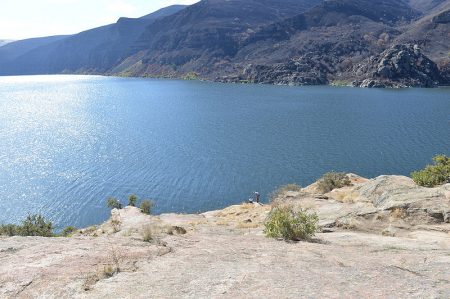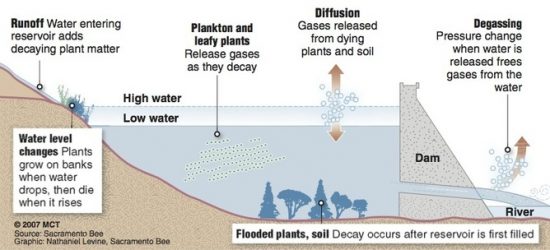October 1, 2016 – Hydroelectric projects exploit the power of rivers by damming them up and creating an artificial drop to exploit the energy generated from the descending flow. They also create artificial lakes behind the dam and it is these bodies of water that are providing some surprising unintended consequences.
The world’s reservoirs according to Washington State University (WSU)researchers produce 1 gigaton of carbon emissions or 1.3% of all anthropogenic sources of global warming gases. That 1.3% is greater than Canada’s entire contribution to global greenhouse emissions.

The study appears in the journal BioScience. It looks at the biomass contained in reservoirs and the resulting emissions, largely methane (CH4) a gas 34 times more potent than carbon dioxide (CO2).
Bridget Deemer, WSU research associate, remarks that reservoirs are responsible for 25% more CH4 than what was previously thought. Some have been created to control river flow to minimize flooding. Others are built to produce hydroelectric power which has always been described as a green renewable energy source.
The study, however, suggests that hydroelectric dams although renewable power generators, may not be green at all. And this just adds to the reputation that some artificial reservoirs have been getting of late. Many are being removed to allow for the restoration of river ecosystems leading to improved fish, animal and plant populations.
Artificial reservoirs, unlike lakes, create widespread destruction of vegetation at the onset. As water backs up behind dams existing flora is drowned and begins to decay. In addition rivers deposit upstream debris into the reservoirs further adding to submarine biomass. Decomposition leads to leaking of emissions of CO2, CH4 and nitrous oxide (N2O). All three are potent contributors to global warming. In reservoirs fed by runoff from farms where there is excess application of fertilizers containing phosphorus , algae blooms further contribute more greenhouse gas emissions.

Deemer states, “there’s….a growing sense in the literature that methane bubbles are a really important component of the total emissions from lake and reservoir ecosystems.”















